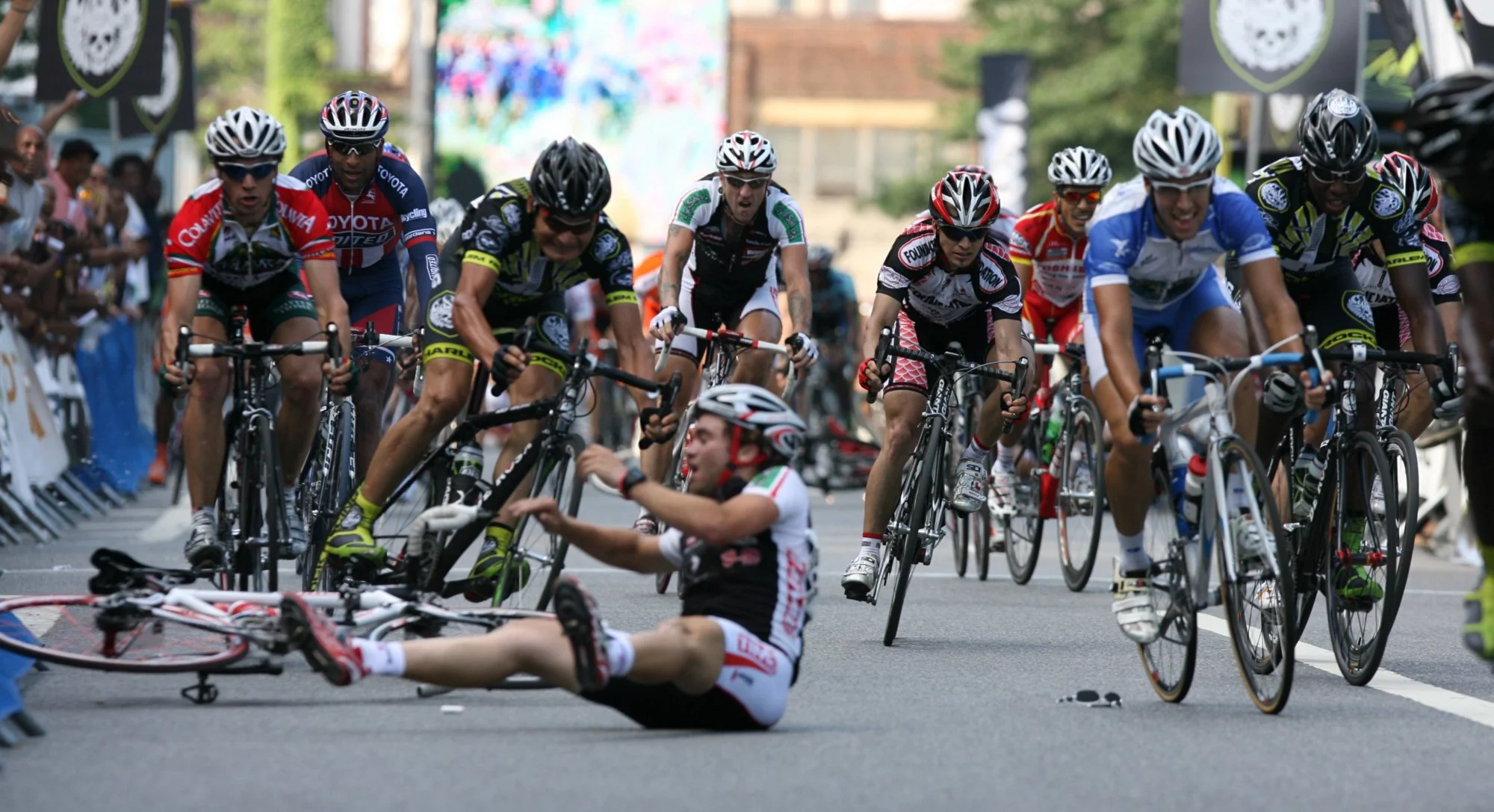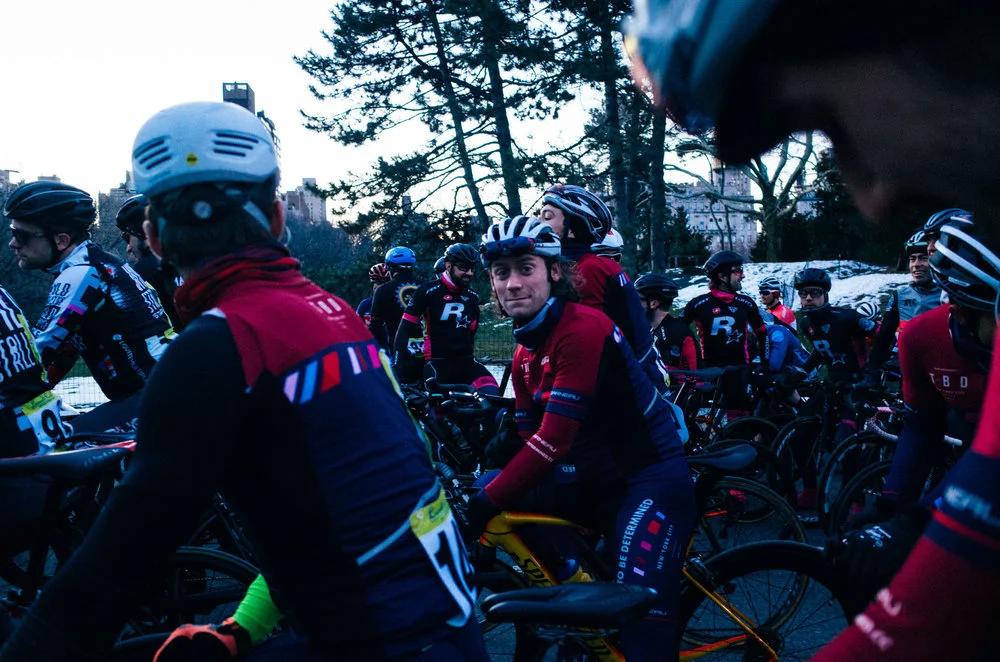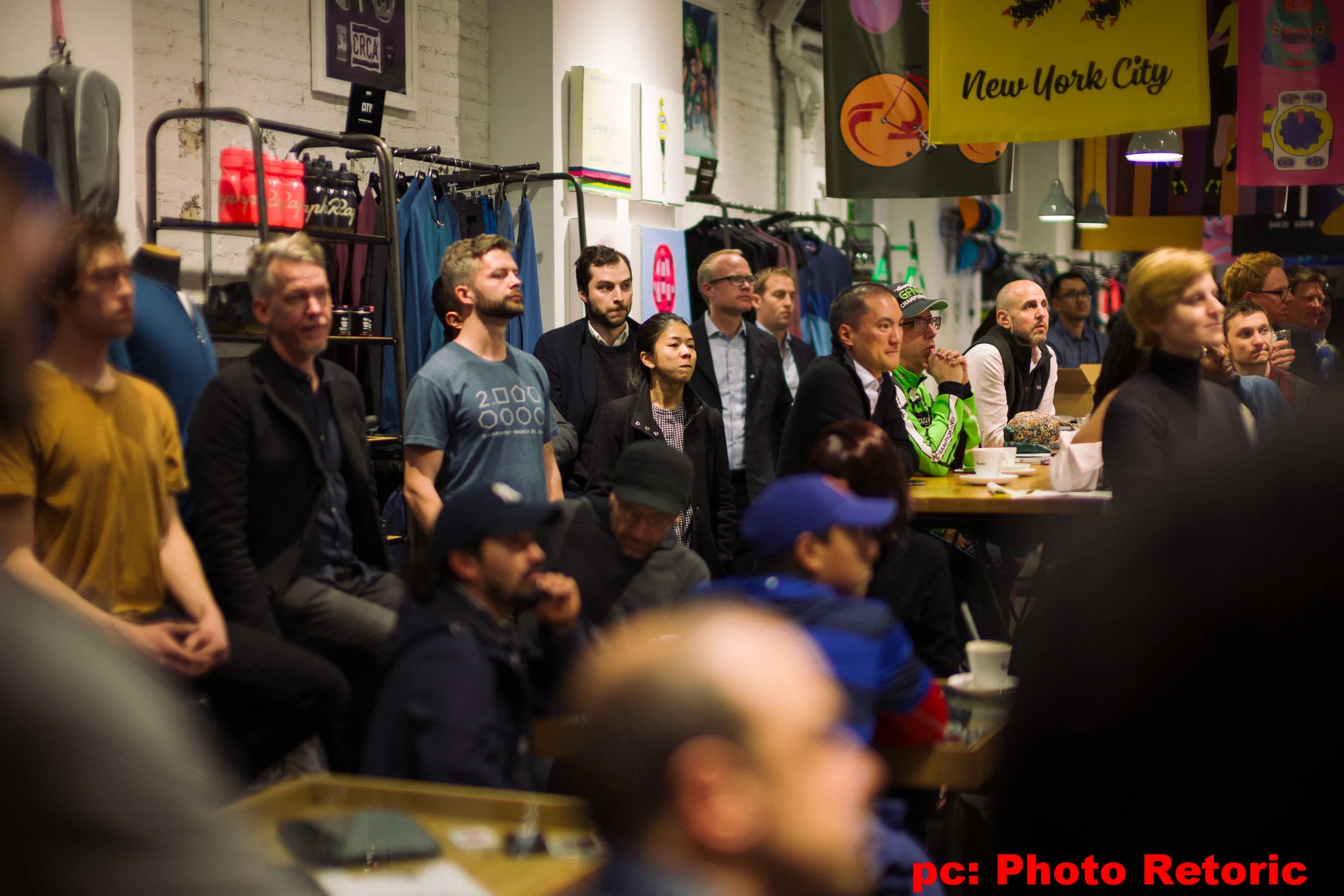Part of the CRCA Nancy Morgenstern Memorial Fund Women's Development series presented by Specialized
Words by Lisa Mazzola
“There are two types of bikes. Bikes that fit and bikes that don’t” ----Happy Freedman
On April 24th the 2018 CRCA Nancy Morgenstern Memorial Fund Women’s Development Series p/b Specialized hosted an “off the bike” educational event on the much discussed and debated topic of bike fit. Our goal was to help newer racers understand the role that bike fit plays in performance, and also to give them a chance to actually watch a bike fit in action through a guided demonstration. Development series participants had the opportunity to meet Happy Freedman from the Hospital for Special Surgery Performance Lab and spend time learning about his process as he conducted a fit demo on one of them.
Happy is not your typical bike fitter in that he does not work exclusively independently. He is part of a multi-disciplinary, hospital-based team. Working closely with physical therapists, doctors and investigators in the HSS motion lab, program focuses on clinical bike fit evaluation, advancing performance, and also research. Their clients range from elite and professional level athletes, to people with disabilities that need both physical and extensive equipment modification in order to ride a bike. Happy emphasizes that he is fitting the cyclist, not the bike, making sure to address the individual needs of the rider with as little equipment changes as necessary. We were joined by Ben Serotta, a master of bike fitting himself with a history of not only building custom bikes, but creating some of the first bike fitting methodology such as the Sizecycle, SICE (Serotta International Cycling Institute) and the XY tool, the standard bike fitting tool for documenting rider position. We were also joined by Lori Lee Lown, coach and bike fitting specialist from California. Both Ben and Lori have gone through the fit process with Happy as athletes, to be able to share methods with their clients.
During the demonstration, Happy was assisted by CRCA’s own Marshal Director, Tony Plecher who is currently completing his degree in Physical Therapy and as part of that has been interning with Happy at the Performance Lab. Tony conducted the off-the-bike physical assessment portion, guiding the rider through a series of strength and flexibility exercises that informed Happy’s process. Collaborating with Physical Therapists and other HSS professionals is common as part of their multidisciplinary approach. Happy will engage other staff as needed acknowledging that some riders need additional intervention before he can work with him. Once they are at the fitting stage he address the rider holistically, observing the riders physicality, from body position both static and in movement, as well as examining how effectively riders can us their breathe on the bike. And although they have all the technical tools and equipment to inform any gear changes or tweaks, Happy first spends time teaching people how to be a more dynamic rider by using their own bodies to make adjustments to their position. Through guided on the bike movement exercises, Happy helps riders to engage their “mobile adapter” joints (shoulders, hips, and ankles), to make corrections and retrain movement patterns to allow for a more optimal riding position. Happy says that, “Everybody says they want more watts, but nobody knows why.” But his approach is one that prioritizes economy and efficiency, using his eyes and also ears to assess changes in a rider's position and cadences. He describes the fit as a snapshot in time, and thus emphasizes the need for riders to be able to adopt a more dynamic riding style in situ, making adjustments to their position as the demands of the terrain or event dictates.
It was a great learning experience for all of us and I think that everyone was able to take away some new insights into this hugely complex topic. One of my own personal takeaways was the idea that I should strive to be a more dynamic rider, which is more commonly referenced in the realm of cyclocross or mountain biking. We all can get caught up in the idea of dialing in our gear to perfection, but sometimes the solution or at least part of it, is already within our reach.

















